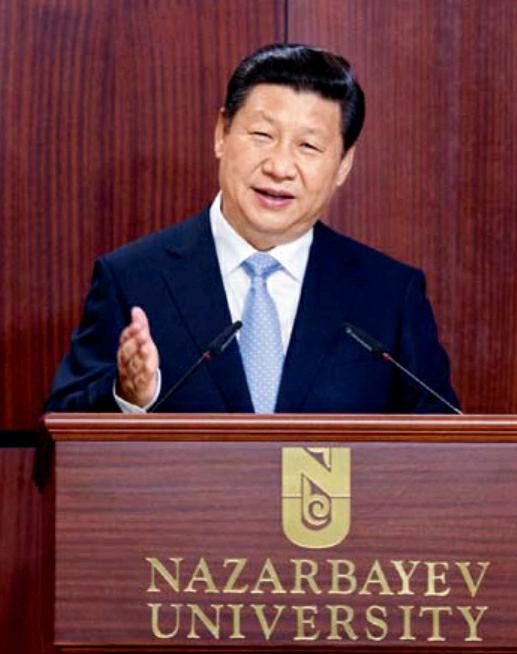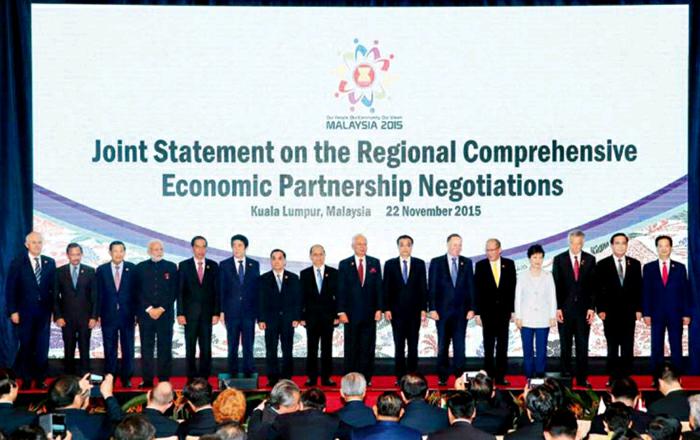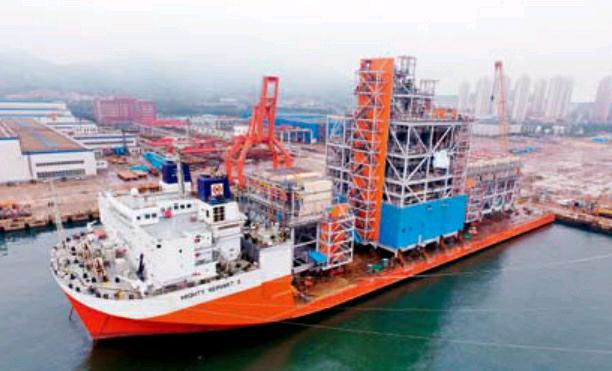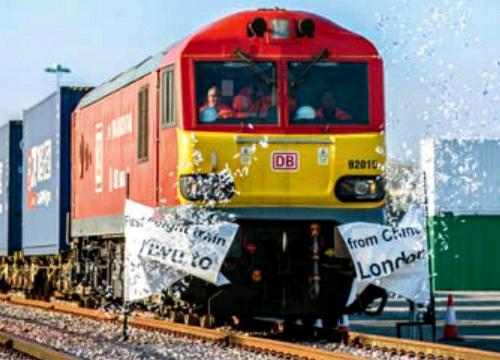The Belt and Road:New Cooperation and Development
2017-04-10byZhangYunling
by+Zhang+Yunling
Since the Belt and Road Initiative was proposed by China in 2013, it has continued to attract increasing attention both domestically and internationally for two major reasons: First, the Initiative introduced a new concept for development and cooperation that has been widely accepted. Second, it emphasizes action rather than empty talk and has yielded tangible early results. Today, the Initiative has become far more than just a proposal calling for regional cooperation. In a broader context, it is an innovative cooperation concept and a platform embracing the whole world.
Overcoming the Geographical Restrictions of Western China
By promoting the connectivity of the Asian, European and African continents and their adjacent seas, the Initiative of building the Silk Road Economic Belt and the 21st-Century Maritime Silk Road (“Belt and Road”) places special focus on infrastructure, industrial parks, port economic zones, and port logistics networks. It aims to connect several major continents and promote the free flow of investment, commodities, services, capital, technology, and personnel to create new development momentum.
Of course, China has its own strategic considerations in proposing the Initiative. Among them, the most important is the exploration of new development space for Chinas economic transformation. Since China began to implement the reform and opening-up policy in the late 1970s, its eastern coastal areas have experienced the majority of the countrys economic development due to their geographical advantages. While eastern China has attracted increasing inflow of resources and labor, western China remains in stark contrast, with its vitality dwindling, exacerbating Chinas regional disparities. In turn, unbalanced regional development has become a key roadblock hindering Chinas social and economic stability and sustainable development.
The Chinese government has been making major efforts to alleviate this imbalance. The biggest and most influential policy is the Western China Development Strategy, which was launched in the early 21st Century. Covering a total of 12 provinces, autonomous regions, and municipalities, the strategy provides substantial support for infrastructure construction including highways, railways, power grids and natural gas projects and encourages resources to flow from eastern to western China through preferential policies. However, years after the strategy went into effect, the western part of the country still hadnt witnessed impressive progress in terms of competitive strength, and unbalanced regional development hadnt seen substantial change. It became clear that a major reason for the slow progress was the geographical restrictions of western China.
Compared with the more domestically-focused Western China Development Strategy, the Belt and Road Initiative emphasizes that participation from both domestic and international players will create an even more open market for the western China region. On land, the Silk Road Economic Belt focuses on linking China, Central Asia, West Asia, Russia and Europe and connects China directly to Southeast and South Asia to construct a new and open development belt. At sea, the 21st-Century Maritime Silk Road is designed to stretch from Chinas coast to Europe through Southeast Asia, the Indian Ocean, and Africa. It also connects China and Oceania to establish cooperation zones across seas and realize mutual development. Connecting China with countries along the Belt and Road will help create new space for economic development, which will benefit not only western China, but also the whole country.
Today, global economic development is undergoing adjustments that call for new ideas and initiatives. The Belt and Road Initiative proposes cooperation and development through innovation, construction of a new environment for comprehensive development and the fostering of new economic growth engines driven by shared experiences, resources, and interests, to realize sustainable, inclusive, and balanced development. The Belt and Road Initiative is one of the most influential programs in the world today.
Birth of an Integrated Market
The Belt and Road Initiative places top priority on coordination. Countries along the Belt and Road are urged to coordinate their economic development strategies and policies and design plans and measures to enhance regional cooperation to provide policy support for implementation. The second priority is achieving connectivity among countries along the Belt and Road through building a wide-reaching infrastructure network that includes both planned infrastructure projects and relevant technical standards. The third priority is improving investment and trade conditions and removing investment and trade barriers to create a sound business environment within the region and in all affected countries. Fourth, the construction of a currency stability system, investment and financing system and credit information system aims to expand the scope and scale of bilateral currency swap and settlement with other countries along the Belt and Road, develop a bond market and found new financial institutions such as the Asian Infrastructure Investment Bank (AIIB), the New Development Bank(NDB), and the Interbank Consortium of the Shanghai Cooperation Organization (SCO). Fifth, the Initiative promotes cultural and academic exchanges, personnel exchanges and cooperation, media cooperation, youth and women exchanges and volunteer services to win public support and deepen bilateral and multilateral cooperation. As a large developing country, China, the designer and key driver of the Initiative, will provide key capital input and technical support for the aforementioned cooperation and development.
Facility connectivity is a priority area for implementing the Initiative. Connectivity involves infrastructure construction, legal alignment, rules and technical standards, as well as personnel exchanges and flow among countries along the Belt and Road. Focus on infrastructure demands the construction of modern transportation networks. The key aim of enacted policies, rules and technical standards on connectivity is to significantly reduce or eliminate restrictions on transportation, trade, and investment. Focus is placed on personnel flow to facilitate engineering technology exchange, corporate cooperation, educational and cultural personnel exchange, and cross-border tourism. China has accumulated abundant management experience on infrastructure network construction and owns the necessary equipment as well as technical skills, enabling it to play an important role in improving infrastructure in countries along the Belt and Road.
Investment and trade cooperation is a major pillar of the Belt and Road. The Initiative strives to improve investment and trade facilitation and remove investment and trade barriers to create a sound business environment within the region and in all related countries. The Initiative advocates cooperation that will expand trade and investment and upgrade related structures. Via various measures like improving infrastructure, founding industrial parks and port networks, raising funds and increasing capacity, the Initiative aims to create greater space for development.
Financial integration is an important backing for the implementation of the Belt and Road Initiative. Financial integration covers a long international financial agenda including monetary stability, project financing, bilateral currency swap and settlement, bond market, and RMB-denominated bonds. Various financial agencies including AIIB, NDB, Silk Road Fund, China-ASEAN Interbank Association and SCO Interbank Consortium should play supportive roles in multilateral financial cooperation. Cooperation on financial regulation and supervision will be strengthened under the Initiative. An efficient regulation coordination mechanism will be established to improve the risk response and crisis management systems. A regional financial risk early-warning system will emerge, and a communication and cooperation mechanism to address cross-border risk will be created. These joint efforts will help promote currency stability, enhance the capability of the credit system and encourage commercial equity investment funds and private funds to participate in the construction of key projects of the Initiative.
People-to-people bonds will facilitate public support for implementation of the Initiative. Building the Belt and Road not only involves economic cooperation, but also features extensive cultural and academic exchanges, personnel exchanges and cooperation, media cooperation, youth and women exchanges and volunteer services, all of which will help win public support for deepening bilateral and multilateral cooperation.Through various cooperation mechanisms, the Initiative aims to promote personnel, tourism, and sports exchanges, epidemic information sharing, exchanges of prevention and treatment technologies and training of medical professionals. Additionally, the Initiative will integrate existing resources to expand and advance practical cooperation between countries along the Belt and Road on science and technology, youth employment, entrepreneurship training, vocational skill development, social security management, non-governmental exchanges, and city-to-city cooperation.
Considering countries along the Belt and Road feature contrasting development levels, the Belt and Road Initiative would be impossible to implement if it adopted a unified plan. Chinas construction in various fields should coordinate the development strategies of other countries along the Belt and Road for win-win results that benefit every participating party. The economic development of many countries along the Belt and Road lags behind due to a lack of infrastructure investment. By participating in construction of the Belt and Road, these countries can merge their own development into the bigger regional cooperation network and break through their own limitations on transnational links and logistics networks.
In the future, construction of the Belt and Road will gradually improve the connectivity of Asia, Europe and Africa. By constructing an infrastructure network, the Belt and Road will provide a new environment for developing new industrial zones, financial centers, free trade zones, and investment zones as well as some other comprehensive projects such as oil and gas pipelines, power grids, internet infrastructure, power lines, and telecommunication networks. These moves are bound to create a huge market fusing Asia, Europe and Africa.
“Open Regionalism”
In contrast with traditional development aid, construction of the Belt and Road will adopt cooperation requiring joint participation, planning and construction, after which any fruits will be shared by all participants. Every participant is an equal partner. Geopolitically, since the construction of the Belt and Road involves more than 60 countries, it requires active participation and close cooperation from all relevant parties. The Initiative always follows the principle of mutual consultation with all affected parties before any joint construction commences. Great efforts will be made to coordinate the development strategies of all participating countries.
After more than three decades of rapid economic growth, China has reached a “new normal” in terms of economic development. The country is now experiencing slower but higher quality growth. Chinas manufacturing industry needs to find new places with lower costs and improve technology to maintain its competitiveness. The cooperation mechanism proposed by the Initiative will integrate the massive space for development and cost advantages of developing countries in Asia and Africa, but contrast previous practices such as relocating outdated and high-polluting productions to other countries. The Initiative emphasizes that investors need to design and build new industries alongside locals through mutual consultation. From this perspective, it helps expand and upgrade industry.
Most countries and regions along the Belt and Road are developing economies with per capita GDP measuring less than half of the worlds average. No single country can establish a quality infrastructure network on its own. Since infrastructure development requires long-term investment, support and cooperation from public funds and financial institutions are tremendously important. AIIB created a new model for infrastructure development and cooperation financing, which will help break bottlenecks restricting long-term investments. AIIB membership is open to all countries that are willing to contribute to Asian development and global economic development. Operation of the institution strictly follows international rules, and decisions are jointly made by all members.
The global economy is facing great challenges and undergoing painful adjustments. Because of the widening income gap and the exacerbation of unbalanced development, trade and investment growth has slowed, and protectionism is prevailing. Construction of the Belt and Road will foster a new mode of openness, cooperation, and development. With governmental support and the participation of international organizations, the Initiative is sure to attract abundant public and private capital, which will help improve both the internal and external environment for trade and investment, and unleash further potential for economic development.
Of course, because countries along the Belt and Road feature diverse national conditions and interests, pulling them together to build the Belt and Road is not an easy task. Various risks, including political instability, investment barriers and the threat of terrorism, do threaten the process. Avoiding them requires in-depth research, comprehensive understanding of the situation, and a balance of benefits with risks. At the same time, the construction of the Belt and Road aims for long-term development rather than short-term gains. Priorities must be defined when promoting construction, and proceeding too quickly should be avoided. China, as the advocate of the Belt and Road Initiative, must coordinate the interests of various parties, assess the risk of various commercial projects, strengthen bilateral economic and trade agreements and regulations, promote successful modes of cooperation, establish key entrepreneurial projects and seek aligning interests on economic development, political cooperation, security, and personnel exchanges among the countries. In terms of the priorities in implementing the Initiative, an effective coordination mechanism is necessary to ensure that first things happen first, the interests of different countries are balanced and every participant benefits.
The Belt and Road Initiative will help establish a new, cooperative and win-win regional and international order. In particular, against the backdrop of profound global economic changes, the Initiative provides a new concept and path to improving the comprehensive development environment for developing economies and creates new development momentum by unleashing participation enthusiasm and mobilizing resource input. The Initiative will help the world economy get rid of recession and enter a new phase of development. Today, a variety of answers and solutions should be ready to address development problems. While the Trump
administration advocates an “America first” protectionist doctrine, Chinas Belt and Road Initiative aims for open cooperation and common development, making it even more important today. A
call for cooperation rather than strategic competition, the Initiative promotes awareness of a community of shared destiny and fosters regional and international peace and cooperation.